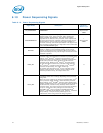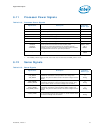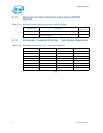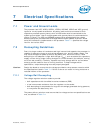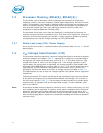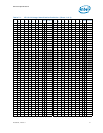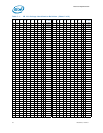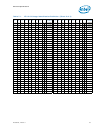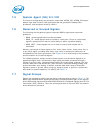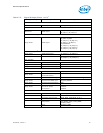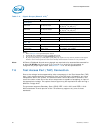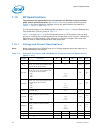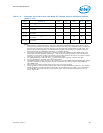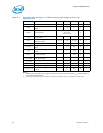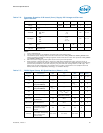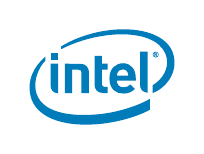
Electrical Specifications
80 Datasheet, Volume 1
7.5 System Agent (SA) V
CC
VID
The V
CCSA
is configured by the processor output land VCCSA_VID. VCCSA_VID output
default logic state is low for 2nd generation and 3rd generation Desktop Core
processors, and configures V
CCSA
to 0.925 V.
7.6 Reserved or Unused Signals
The following are the general types of reserved (RSVD) signals and connection
guidelines:
• RSVD – these signals should not be connected.
• RSVD_TP – these signals must be routed to a test point. Failure to route these
signal to test points will restrict Intel’s ability to assist in platform debug.
• RSVD_NCTF – these signals are non-critical to function and may be left un-
connected.
Arbitrary connection of these signals to V
CC
, V
CCIO
, V
DDQ
, V
CCPLL
, V
CCSA,
V
AXG,
V
SS
, or
to any other signal (including each other) may result in component malfunction or
incompatibility with future processors. See Chapter 8 for a land listing of the processor
and the location of all reserved signals.
For reliable operation, always connect unused inputs or bi-directional signals to an
appropriate signal level. Unused active high inputs should be connected through a
resistor to ground (V
SS
). Unused outputs maybe left unconnected; however, this may
interfere with some Test Access Port (TAP) functions, complicate debug probing, and
prevent boundary scan testing. A resistor must be used when tying bi-directional
signals to power or ground. When tying any signal to power or ground, a resistor will
also allow for system testability. For details, see Table 7-8.
7.7 Signal Groups
Signals are grouped by buffer type and similar characteristics as listed in Table 7-2. The
buffer type indicates which signaling technology and specifications apply to the signals.
All the differential signals and selected DDR3 and Control Sideband signals have On-Die
Termination (ODT) resistors. There are some signals that do not have ODT and need to
be terminated on the board.



